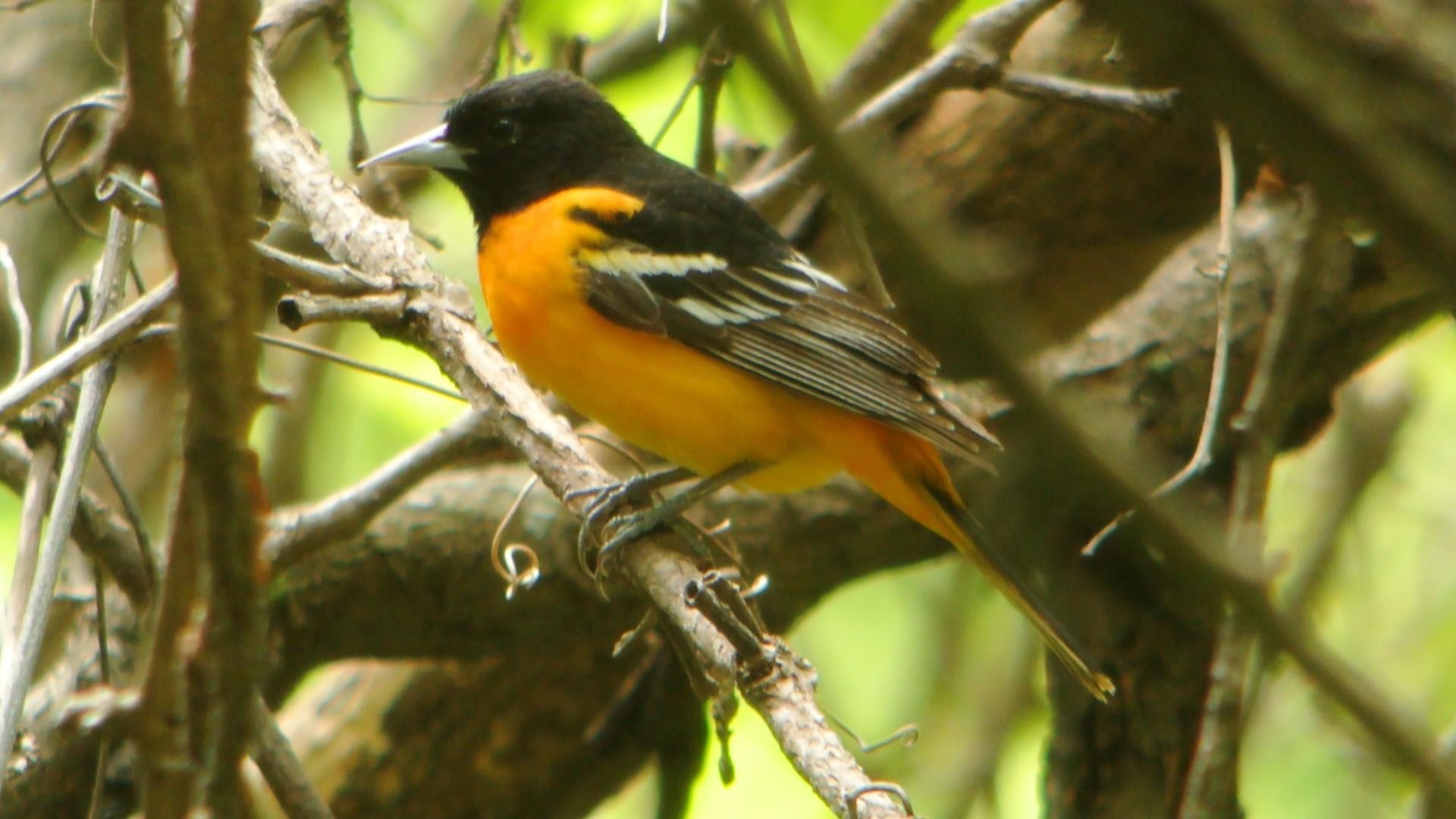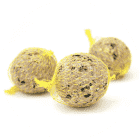Baltimore Oriole
A species of New world orioles Scientific name : Icterus galbula Genus : New world orioles
Baltimore Oriole, A species of New world orioles
Botanical name: Icterus galbula
Genus: New world orioles
Content
Description People often ask General Info
 Photo By Andy Reago & Chrissy McClarren , used under CC-BY-2.0 /Cropped and compressed from original
Photo By Andy Reago & Chrissy McClarren , used under CC-BY-2.0 /Cropped and compressed from original Description
The baltimore Oriole is the most common oriole in North America. This long-distance migratory songbird lives high in tree canopies, so it's often heard but rarely seen. Although it's mainly insectivorous, it is particularly fond of dark-colored, well-ripened berries. The baltimore Oriole is the state bird of Maryland and is the mascot of Baltimore's professional baseball team.
Size
17 - 22 cm
Life Expectancy
6-10 years
Nest Placement
Tree
Clutch Size
3 - 7 eggs
Incubation Period
1 brood
Number of Broods
11 - 14 days
Nestling Period
11 - 14 days
Feeding Habits
Baltimore Oriole predominantly feeds on insects, fruit, and nectar, varying seasonally. Summer diets are insect-rich for protein, while spring and fall favor nectar and ripe fruits, providing energy for migration. They consume beetles, crickets, grasshoppers, moths, and larvae, including pests. They forage in foliage, occasionally damaging fruit crops, but also control nuisance caterpillars, such as forest tent caterpillars.
Habitat
Baltimore Oriole predominantly inhabit open woodlands, forest edges, and areas with scattered trees such as riverbanks and small groves. They favor high, leafy deciduous trees but avoid deep forests. These birds thrive from sea level to middle altitudes in temperate climates, embracing a diverse array of secondary habitats including orchards, farmland, and urban parks. They are also known to adapt well to human-altered landscapes. During winter migration to Central America, they prefer gardens, open woodlands, and shade-grown coffee and cacao plantations, engaging with flowering trees and vines.
Nest Behavior
Baltimore Oriole females choose the nest site, construct the nest unaided over about 1-2 weeks, and may reuse old material. Egg laying follows nest construction, with males providing little to no assistance in weaving but may contribute materials. Both parents are involved in post-laying care for eggs and young.
Nest Characteristics
The nests of baltimore Oriole are suspended, sock-like structures woven from fibers like grass, grapevine bark, wool, and artificial materials. These nests are anchored to forks in slender branches, typically in trees like American elms, maples, and cottonwoods. They measure 3-4 inches deep with a 2-3 inch wide top opening, and a bulging bottom chamber about 3-4 inches across.
Dite type
Insectivorous
People often ask
General Info
Feeding Habits
Bird food type

Suet

Sugar Water

Fruit
Bird Feeder Type

Platform

Nectar Feeder
Sounds
Call
Recording location: Mexico
Call
Recording location: Mexico
Song
Recording location: United States
Behavior
Baltimore Oriole engage in dynamic foraging habits, frequently seen in treetops searching for insects, fruits, and nectar. Their acrobatic skills are evident as they hang upside down or flutter beyond their perch to reach food. Often spotted due to their vibrant plumage and melodious singing from high vantage points, they may also visit bird feeders. Notably territorial only near their nests, baltimore Oriole can feed in proximity to others. During mating rituals, males perform an elaborate display, while females show receptiveness with distinct behaviors and sounds, showcasing their complex social interactions.
Distribution Area
Baltimore orioles are found in the Nearctic in summer, including the Canadian Prairies and eastern Montana in the northwest eastward through southern Ontario, southern Quebec and New Brunswick and south through the eastern United States to central Mississippi and Alabama and northern Georgia. They migrate to winter in the Neotropics as far north as Mexico and sometimes the southern coast of the United States, but predominantly in Central America and northern South America. 

 Photo By Andy Reago & Chrissy McClarren , used under CC-BY-2.0 /Cropped and compressed from original
Photo By Andy Reago & Chrissy McClarren , used under CC-BY-2.0 /Cropped and compressed from original